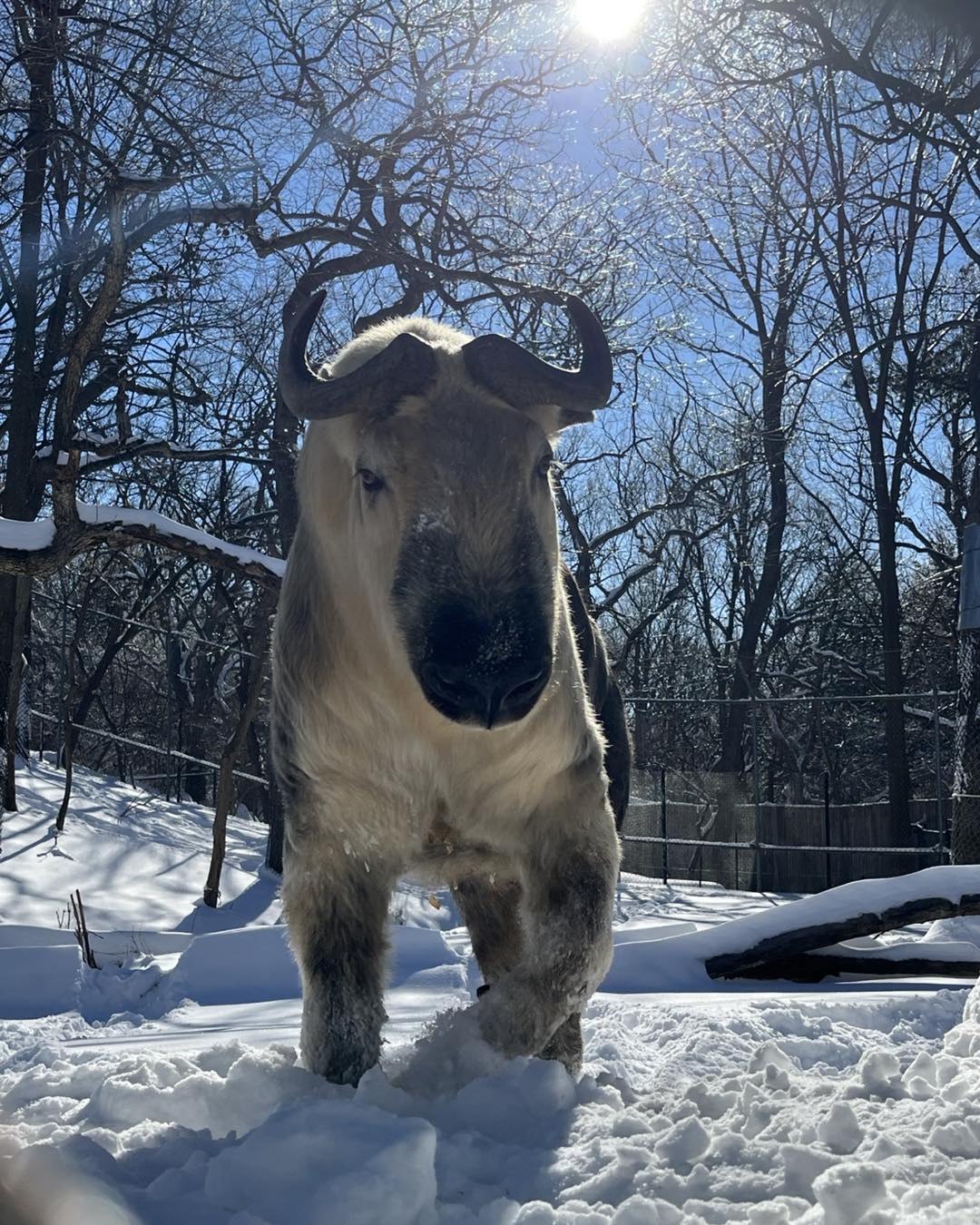- Overview of the takin species: habitat, diet, and physical characteristics.
- Conservation status and efforts to protect takin populations.
- The role of zoos and wildlife parks in the preservation of takin.
- Behavioral traits and social structure of takin in the wild and captivity.
- The impact of seasonal changes on takin lifestyle and adaptation strategies.
The takin, a remarkable member of the goat antelope family, thrives in the mountainous regions of China and the Himalayas. These hardy mammals are adapted to high-altitude environments, typically residing between 4,000 and 12,000 feet above sea level. Their natural habitats consist primarily of forests and shrublands, where they have evolved to take advantage of tough terrain and scarce resources.
The takin’s dietary habits are as diverse as their habitat. These creatures feed on a variety of plant materials, including foliage, bamboo, bark, and leaves. This herbivorous diet is sustained by their robust digestive systems, which efficiently extract nutrients from the fibrous plant matter. It’s fascinating to note their ability to thrive on such a challenging diet, which highlights their evolutionary success in adapting to their mountainous environment.
Physically, takins are imposing animals, with males reaching lengths of up to 8 feet and weights nearing 790 pounds. Females are somewhat smaller, with weights up to around 550 pounds. Both sexes are well-equipped for survival in their rugged habitats, sporting thick, oily coats that provide insulation against the cold and wet conditions common at high altitudes.
The conservation status of takins is of significant concern to wildlife biologists and conservationists. Habitat fragmentation and hunting pressures have placed varying populations at risk. As such, takins are classified as "Vulnerable" on the IUCN Red List. Effective conservation strategies are vital to safeguard their populations. These efforts often involve habitat protection, anti-poaching measures, and breeding programs to ensure genetic diversity is maintained.
Zoos and wildlife parks play a crucial role in the conservation of takins. By housing these animals in controlled environments, zoos can help create awareness about these magnificent creatures. These facilities also serve as sites for comprehensive research programs aimed at better understanding takin biology and behavior. Such knowledge is imperative for developing effective conservation policies and practices in their natural habitats.
Takin social structures are intriguing, with individuals forming small herds, particularly during the breeding season, which typically occurs from July to August. These groups, often led by adult males, engage in elaborate social behaviors. The interactions within these herds are complex and run the gamut from playful interactions to strategic displays of dominance among males.
Captive takins often provide researchers with invaluable insights into their behavior and physiology, which can be more challenging to observe in the wild. Observation of captive herds contributes significantly to understanding how these animals interact with each other and their environment, knowledge that can then be applied to wild populations.
Seasonal changes have a profound impact on the lifestyle and adaptation strategies of the takin. Winter can be particularly harsh in their mountainous habitats. This is when their thick coats come into play, providing necessary warmth. Takin also adapts their feeding habits in response to seasonal shifts, sometimes having to travel more extensively to find adequate food as resources become scarcer.
In snow-covered environments, like those observed for the joyful mischief of MuShe and Bao, takins show their playful side, often engaging in frolicking behavior. This display is not just endearing but offers insights into the adaptability and resilience of this species in coping with natural challenges.
Educational programs about takin, like those at reputable zoos, aim to spread awareness and foster a connection between the public and these unique animals. Such initiatives are crucial because they help engender public support for conservation efforts, which is essential for the survival of species like the takin.
Understanding the takin’s role in its ecosystem is also important. They help shape the vegetation they feed on, influencing the composition of their habitats. This ecological contribution further underlines the importance of conserving this species, which holds a significant position in the health and stability of mountainous ecosystems.
Continued research and conservation efforts are critical for the takin. With the cooperation of international conservation initiatives and the support of local communities, there is hope for a future where the takin populations can thrive both in the wild and in captivity. By protecting these animals and their habitats, we not only preserve a unique species but also the biodiversity and ecological balance of the regions they inhabit.
*****
Source Description
That’s what I’m “Takin” about! Our takin, MuShe, female and mom male Bao, are having a ball in the snow!
Want to know more about takin?
The takin belongs to an animal family known as goat antelopes, and they have many adaptations that help them survive in a high elevation mountain like habitat.
They traditionally live in forests and shrub land of China and the Himalayas from elevations of 4,000 – 12,000 feet!
They feed on foliage, bamboo, bark and leaves.
These forest giants measure 5-8 feet in length, and males weight up to 790 pounds and female up to 550 pounds!
They are loving the winter wonderland!!


